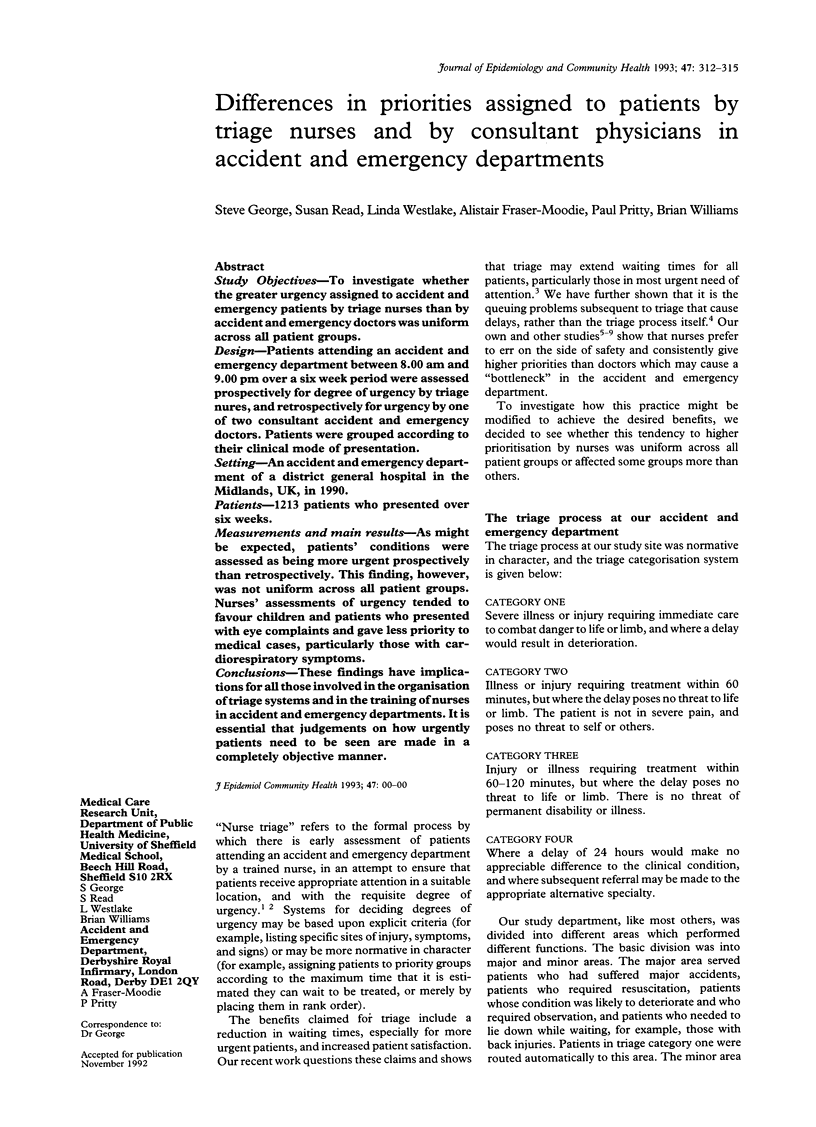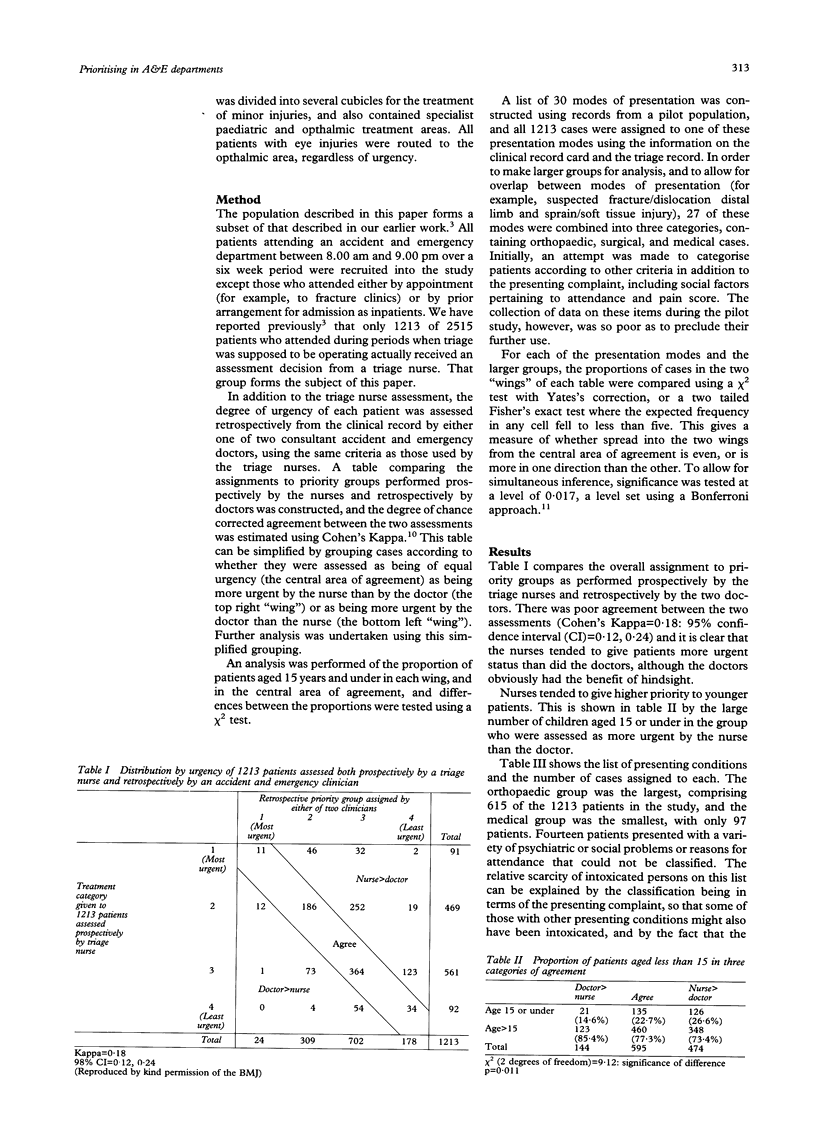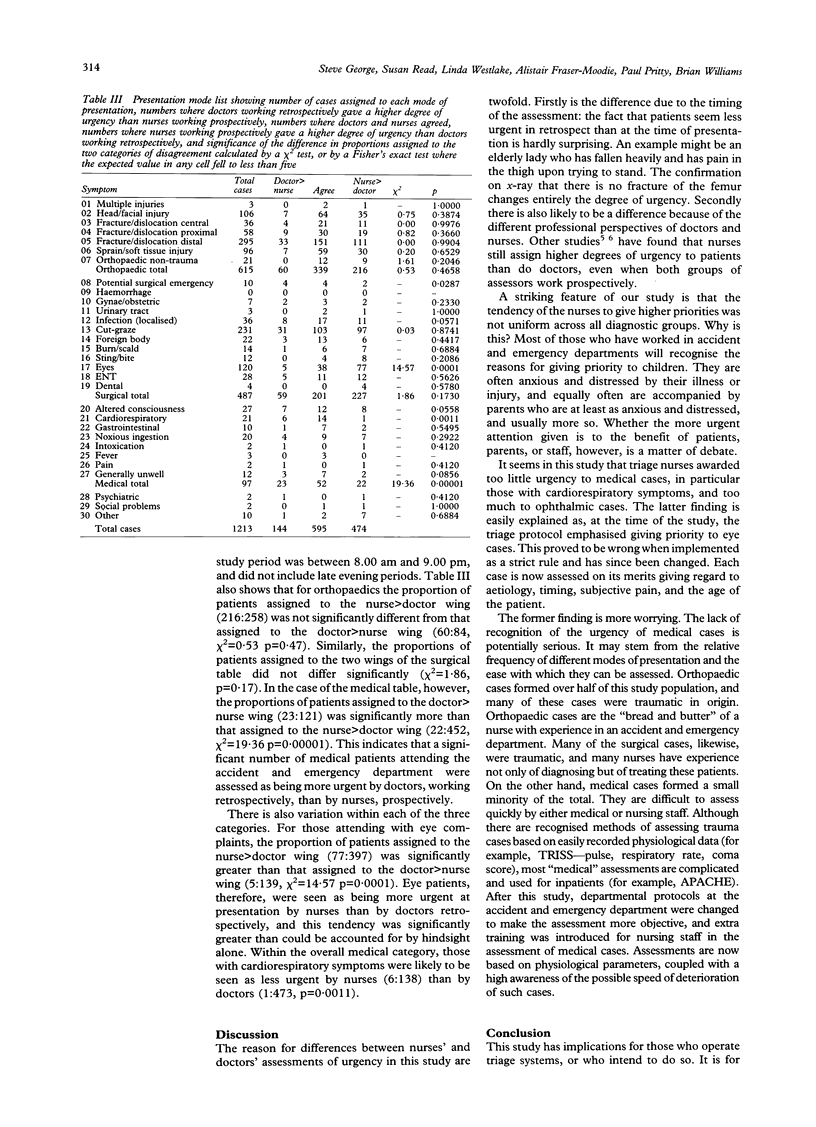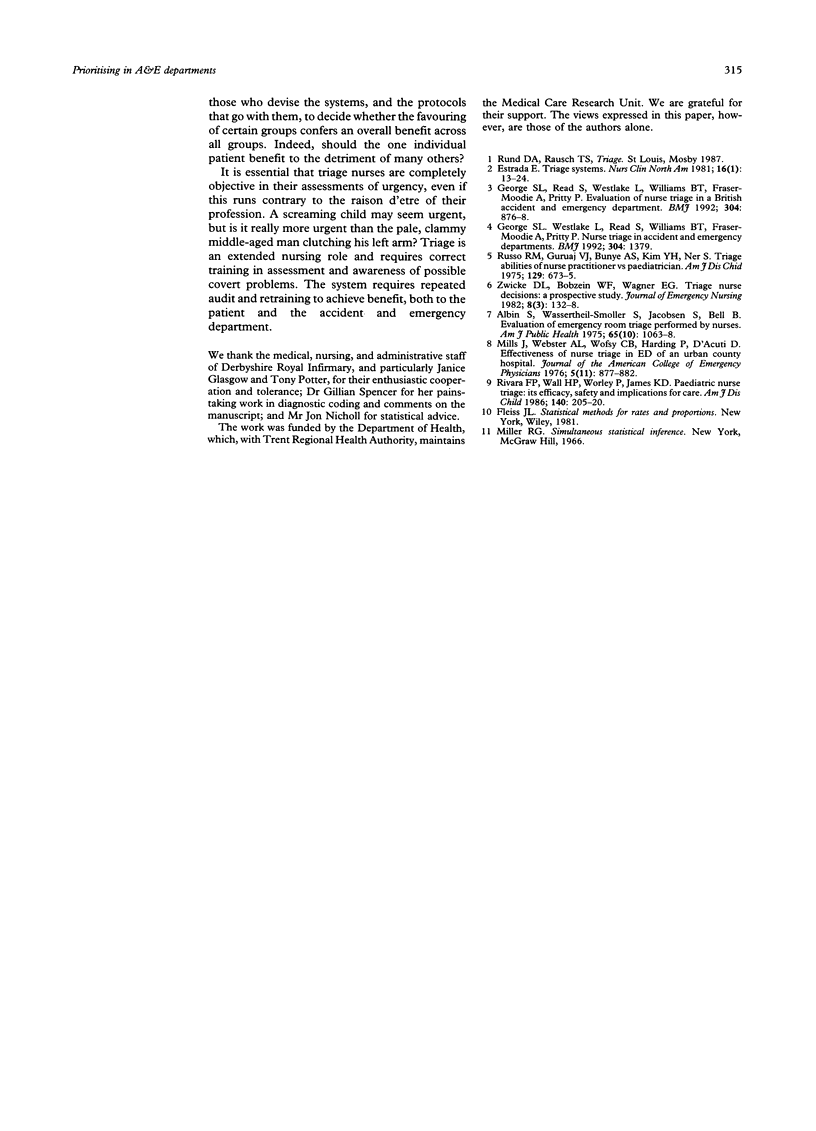Abstract
STUDY OBJECTIVES--To investigate whether the greater urgency assigned to accident and emergency patients by triage nurses than by accident and emergency doctors was uniform across all patient groups. DESIGN--Patients attending an accident and emergency department between 8.00 am and 9.00 pm over a six week period were assessed prospectively for degree of urgency by triage nurses, and retrospectively for urgency by one of two consultant accident and emergency doctors. Patients were grouped according to their clinical mode of presentation. SETTING--An accident and emergency department of a district general hospital in the Midlands, UK, in 1990. PATIENTS--1213 patients who presented over six weeks. MEASUREMENTS AND MAIN RESULTS--As might be expected, patients' conditions were assessed as being more urgent prospectively than retrospectively. This finding, however, was not uniform across all patient groups. Nurses' assessments of urgency tended to favour children and patients who presented with eye complaints and gave less priority to medical cases, particularly those with cardiorespiratory symptoms. CONCLUSIONS--These findings have implications for all those involved in the organisation of triage systems and in the training of nurses in accident and emergency departments. It is essential that judgements on how urgently patients need to be seen are made in a completely objective manner.
Full text
PDF



Selected References
These references are in PubMed. This may not be the complete list of references from this article.
- Albin S. L., Wassertheil-Smoller S., Jacobson S., Bell B. Evaluation of emergency room triage performed by nurses. Am J Public Health. 1975 Oct;65(10):1063–1068. doi: 10.2105/ajph.65.10.1063. [DOI] [PMC free article] [PubMed] [Google Scholar]
- Estrada E. G. Triage systems. Nurs Clin North Am. 1981 Mar;16(1):13–24. [PubMed] [Google Scholar]
- George S., Read S., Westlake L., Williams B., Fraser-Moodie A., Pritty P. Evaluation of nurse triage in a British accident and emergency department. BMJ. 1992 Apr 4;304(6831):876–878. doi: 10.1136/bmj.304.6831.876. [DOI] [PMC free article] [PubMed] [Google Scholar]
- Mills J., Webster A. L., Wofsy C. B., Harding P., D'Acuti D. Effectiveness of nurse triage in the emergency department of an urban county hospital. JACEP. 1976 Nov;5(11):877–882. doi: 10.1016/s0361-1124(76)80034-2. [DOI] [PubMed] [Google Scholar]
- Rivara F. P., Wall H. P., Worley P., James K. D. Pediatric nurse triage. Its efficacy, safety, and implications for care. Am J Dis Child. 1986 Mar;140(3):205–210. doi: 10.1001/archpedi.1986.02140170031023. [DOI] [PubMed] [Google Scholar]
- Russo R. M., Gururaj V. J., Bunye A. S., Kim Y. H., Ner S. Triage abilities of nurse practitioner vs pediatrician. Am J Dis Child. 1975 Jun;129(6):673–675. doi: 10.1001/archpedi.1975.02120430013005. [DOI] [PubMed] [Google Scholar]
- St George D. Nurse triage in accident and emergency departments. BMJ. 1992 May 23;304(6838):1379–1379. doi: 10.1136/bmj.304.6838.1379. [DOI] [PMC free article] [PubMed] [Google Scholar]
- Zwicke D. L., Bobzien W. F., Wagner E. H. Triage nurse decisions: a prospective study. J Emerg Nurs. 1982 May-Jun;8(3):132–138. [PubMed] [Google Scholar]


